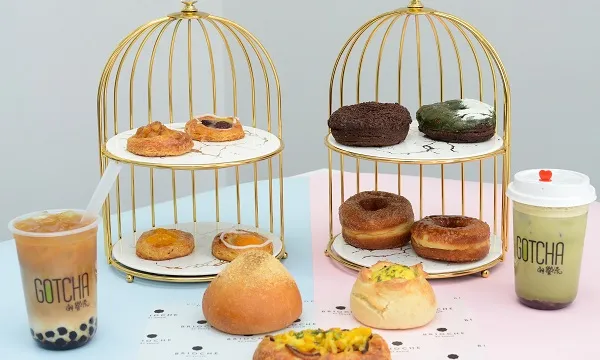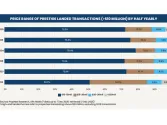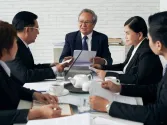
For Chatime, Gotcha, and Milksha, the bubble tea craze shows no signs of bursting anytime soon
The three chains weigh in on the segment that is sweeping markets.
Bubble tea has been a mainstay in the QSR and fast casual space since becoming popular in Taiwan in the 1980s. It is simple enough: milk, tea, and an assortment of toppings like tapioca pearls or boba.
But in recent years, owing to the continuing trend of consumers seeking new and interesting food experiences, bubble tea has caught on. A number of innovative new brands have popped up all over Asia, offering creative ways to reinvent the simple drink to appeal to the new generation of consumers.
“The bubble tea scene is growing exponentially in both Australia and internationally. At the same time, it’s getting far crazier and extremely competitive with so many brands entering the market,” Orlando Sanpo, business development manager of EFC Group Australia, which operates Gotcha Tea, told QSR Media.
The appeal of a social experience
Comparatively, the growth of bubble tea chains is not that dissimilar to the explosion of cafes and coffee shops a few years ago. According to Guthriessa Tjiong, social media manager of Chatime, consumers have begun to associate the beverage with a social experience meant to be shared with other people.
“The Bubble Tea scene in Australia and especially within Sydney is blowing up. Bubble Tea appears to be one of the many trends that’s catching on in the social sphere for younger generations. In fact, you will often see groups of friends of all cultures come together to enjoy bubble tea together,” Tjiong said.
“Overseas, bubble tea has been around for a long time, evident by our Chatime’s history having founded in 2003. Similar to Australia, though on a much larger scale, people will go out to enjoy bubble tea as a social event. It’s a staple overseas, and brands tend to get creative with different flavours to entice all customers.”
It is expected to keep growing. Citing Fortune Business Insights, Sheng-Chieh (Jeffrey) Lin, Director of Auplus International, operator of Milksha, said that the global bubble tea market was estimated to be at US$1.89 billion in 2018 and is projected to reach US$3.49 billion by the end of 2026.
“The bubble tea craze has been seized in top cities around the world. From our perspective, this trend keeps growing as more and more people are getting familiar with bubble tea drinks including Western markets, especially consumers in Australia,” Lin said.
“Milksha now has its presence in Hong Kong, Macau, Mainland China, Singapore, Australia, Japan, and Canada since Milksha started overseas outlets in 2018. The pace of growth is even faster than ever as we see great opportunities from consumers craving for innovative bubble teas.”
Bubble tea has even permeated popular culture, Sanpo added, with music videos and drama series influencing how the new generation is consuming tea.
“Bubble teas are not seen as beverages anymore, they are more like sophisticated brand and lifestyle products,” Sanpo said.
Tjoing added that with the rise of the internet, K-pop and other Asian cultures, more people are becoming open to trying new and exciting dishes that they previously may not have considered. Bubble tea has become an iconic drink that even Westerners are beginning to enjoy, opening up a whole new market for bubble tea brands.
“Bubble tea stores are different from your local coffee and tea shops just from the range of mix-ins that you see when you walk through the doors. Each drink is brightly coloured and filled with jellies and pearls that make them so different from traditional coffee and tea. While people may go to cafes to relax, bubble tea stores are generally full of life and energy, so it’s a completely different vibe,” Tjiong said.
A fusion of popular trends
Lin said that as bubble teas are no longer strangers to Australian consumers owing to the number of new brands entering the market in the past three years, more and more Australians are seeking higher quality products and are more health conscious about what they consume.
The customisable nature of bubble tea also lends well to the prevalent consumer preference of wanting more individuality to their food. The trend of environmental consciousness has also informed many bubble tea brands about how to reach out to more customers.
“We know our customers want fresh ingredients, reduced sweetness and non-dairy alternatives. It’s all about providing the individual with multiple options to craft their own bubble tea, customised to their preferences and tastes. At Gotcha we want to keep our teas as natural as possible, which is why we do not add any sweeteners to our teas and each Gotcha tea is made fresh to order using premium ingredients including our quality tea leaves and freshly cut seasonal fruits,” Sanpo said.
“We have recognised that millennials are inclined to purchase products and from brands that care about their customers perspectives and opinions, values and care for the environment.”
Lin said that bubble tea has resonated with consumers today because of a personality that echoed many of the values that they have come to expect.
“The charm of bubble tea drinks is about “personality”. Bubble teas offer customers customisations from choosing preferred ice or sugar level to various types of tea bases, toppings, or juice flavours. Young generations also like to show their own personality and are more confident about their choices nowadays. Therefore bubble teas cater to the taste of this generation,” Lin said.
“In the future, we believe that it shall be more diverse and competitive in the bubble tea market. Everyone has their own bubble tea recommendation lists based on their own tastes. However, seeking high quality drinks will be an irreversible trend in the major markets in the future. And the bubble tea brands should think more about social responsibility especially the environmental impact.”
Milksha, for its part, has started offering bamboo fiber straws, and paper bags for their customers. They are also looking into the shift to organic or vegetarian food products to speed up growth in the forthcoming year, the latest of which is an organic soy latte series at the end of 2019.
The future of bubble tea
With the beverage becoming a staple for many Asian consumers, Tjoing said that it is to be expected that the the market will always come out with more new and improved versions of bubble tea.
“But the core of it will still remain an essential part of our culture. In the future, bubble tea will hopefully become even more accessible, maybe even with bubble tea vending machines considering their popularity in Japan.”
“It’s a start to becoming more inclusive for all customers, no matter what their interests are. Who knows, maybe one day, we’ll see a sugar free bubble tea!” Tjiong added.


























